Last updated: October 2025
Discover 15 breathtaking European hiking trails that showcase the continent’s most spectacular landscapes, from Alpine peaks to dramatic coastlines.
Europe’s hiking trails offer some of the world’s most diverse outdoor adventures while keeping them surprisingly accessible. Whether you’re drawn to snow-capped Alpine peaks, rugged coastal paths, or ancient pilgrimage routes, the old continent delivers hiking experiences that combine natural beauty with rich cultural and historical heritage.
This comprehensive guide to the best hikes in Europe is not organized by the hiking type, so it covers everything from challenging multi-day treks to spectacular day hikes, helping you plan your ultimate European hiking adventure. Each trail offers unique landscapes, cultural encounters, and unforgettable memories that make Europe a hiker’s paradise.
Table of Contents
Why Europe Is Every Hiker’s Dream Destination?
Incredible Diversity: From Arctic tundra to Mediterranean coastlines within a few hours’ travel
Rich Cultural Heritage: Ancient paths, historic villages, and centuries-old mountain huts
Excellent Infrastructure: Well-marked trails, reliable public transport, and comfortable accommodations
Safety and Accessibility: Established rescue services and comprehensive trail networks
Year-Round Options: Seasonal variety means there’s always somewhere perfect to hike. There are peaks that have snow year round and there are climate zones where it is always warm.
Let’s explore the trails that define European hiking at its finest.
1. Tour du Mont Blanc (France, Italy, Switzerland)
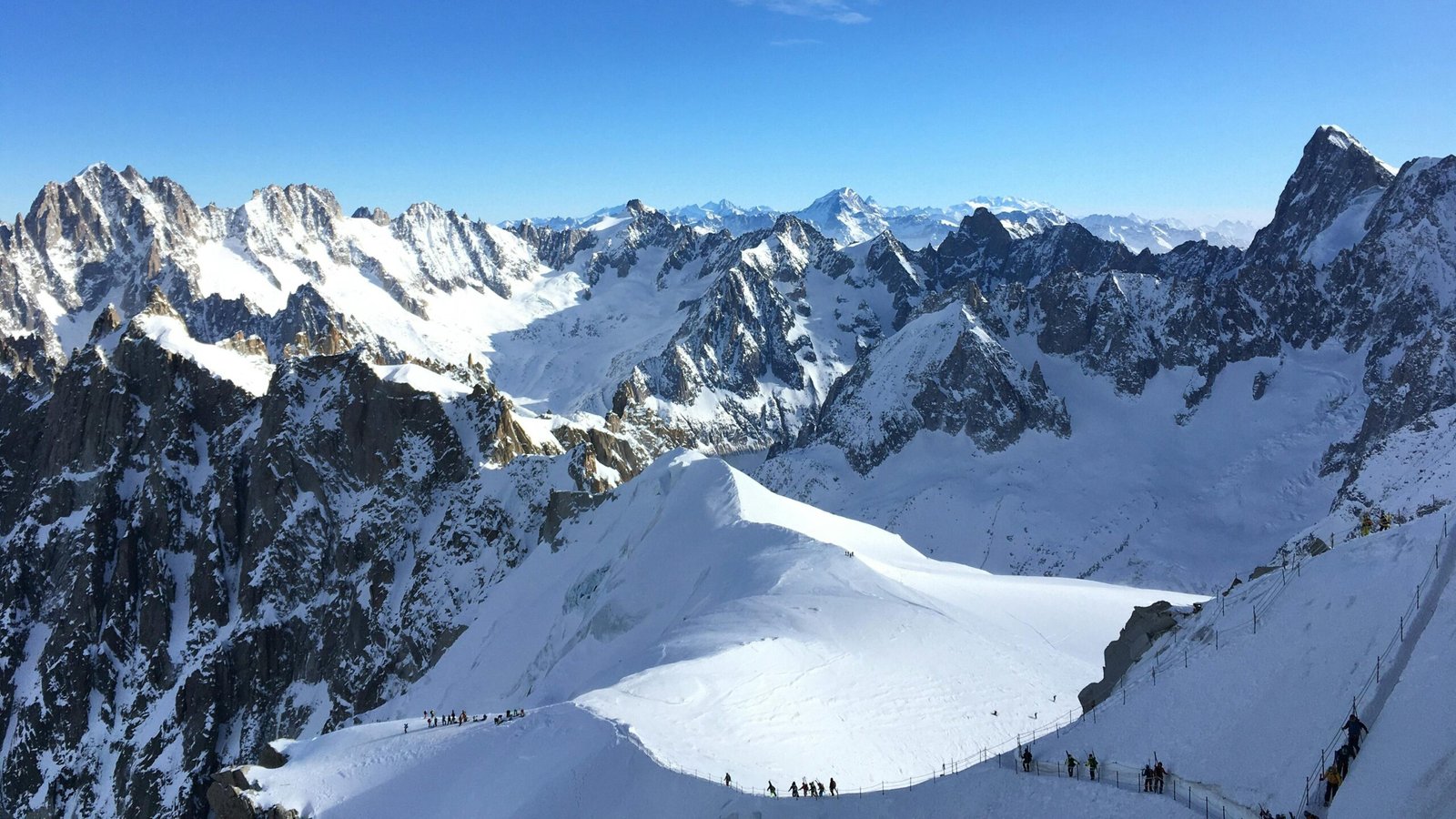
The Crown Jewel of Alpine Hiking
Trail Stats: 170 km (105 miles) | 7-11 days | Difficulty: Moderate to Challenging
The Tour du Mont Blanc stands as Europe’s most iconic multi-day hike, circling the continent’s highest peak through three countries. This legendary trail combines stunning Alpine scenery with the unique experience of hiking through different cultures and languages in a single journey.
You’ll traverse high mountain passes with breathtaking views of glaciers and peaks, descend into charming valleys filled with wildflowers, and stay in traditional mountain refuges where hearty meals and warm hospitality await. The cultural diversity—from French alpine charm to Italian mountain cuisine to Swiss precision—adds layers of richness to the hiking experience.
Trail Highlights: Spectacular views from Aiguille du Midi, the challenging Fenêtre d’Arpette pass, and the famous Lac Blanc overlook. Each day brings new perspectives of the Mont Blanc massif.
Planning Essential: Book mountain huts 6-8 months in advance, especially for July-August. Consider hiking in late June or September for fewer crowds and potentially better weather.
2. Laugavegur Trail (Iceland)
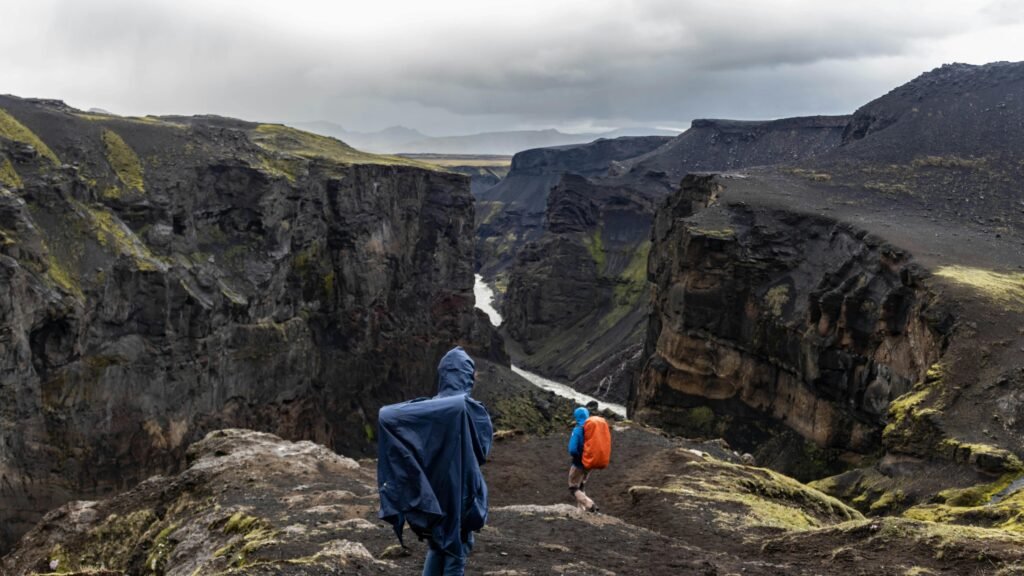
Journey Through an Alien Landscape
Trail Stats: 55 km (34 miles) | 4-6 days | Difficulty: Moderate
Iceland’s Laugavegur hiking trail takes you through some of Earth’s most otherworldly terrain. This trek showcases Iceland’s incredible geological diversity, from colorful rhyolite mountains to vast black sand deserts, steaming geothermal areas, and pristine highland lakes.
The trail begins in Landmannalaugar’s geothermal wonderland, where you can soak in natural hot springs before starting your journey. You’ll hike through landscapes that seem pulled from another planet: rainbow-colored mountains, obsidian lava fields, and emerald green valleys carved by ancient glacial rivers.
Unique Features: The dramatic color contrasts of Iceland’s volcanic landscape, frequent wildlife sightings (Arctic foxes, ptarmigan), and the midnight sun during summer months.
Weather Reality: Icelandic weather changes rapidly and dramatically. Pack for all four seasons regardless of when you visit, and be prepared for strong winds and sudden temperature drops.
3. GR20 (Corsica, France)
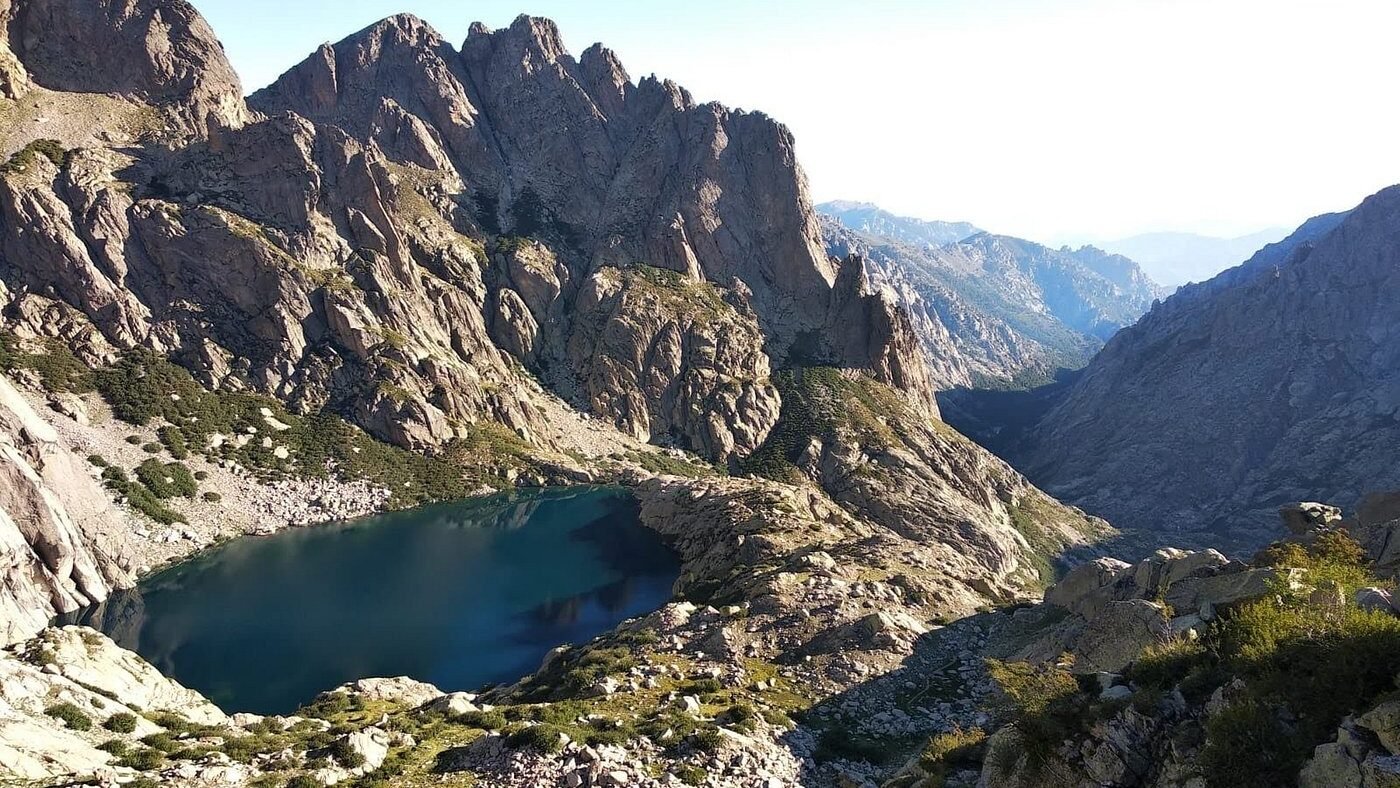
Europe’s Ultimate Challenge
Trail Stats: 180 km (112 miles) | 12-15 days | Difficulty: Very Challenging
The GR20 Corsica has earned its reputation as one of Europe’s toughest long-distance hikes. This demanding trail traverses the spine of Corsica’s mountains, offering wilderness experiences rare in Europe and technical challenges that test even experienced hikers.
The route demands scrambling over granite slabs, navigating exposed ridges, and managing significant daily elevation changes. The reward? Pristine mountain wilderness, crystal-clear mountain lakes, and a profound sense of accomplishment that few trails can match.
Technical Requirements: Previous scrambling experience helpful; some sections require basic rock climbing skills. Weather can change rapidly at high altitude.
Pro Strategy: The northern section (GR20 Nord) is generally more technical, while the southern section offers slightly easier terrain but longer daily distances.
4. Dolomites Alta Via 1 (Italy)
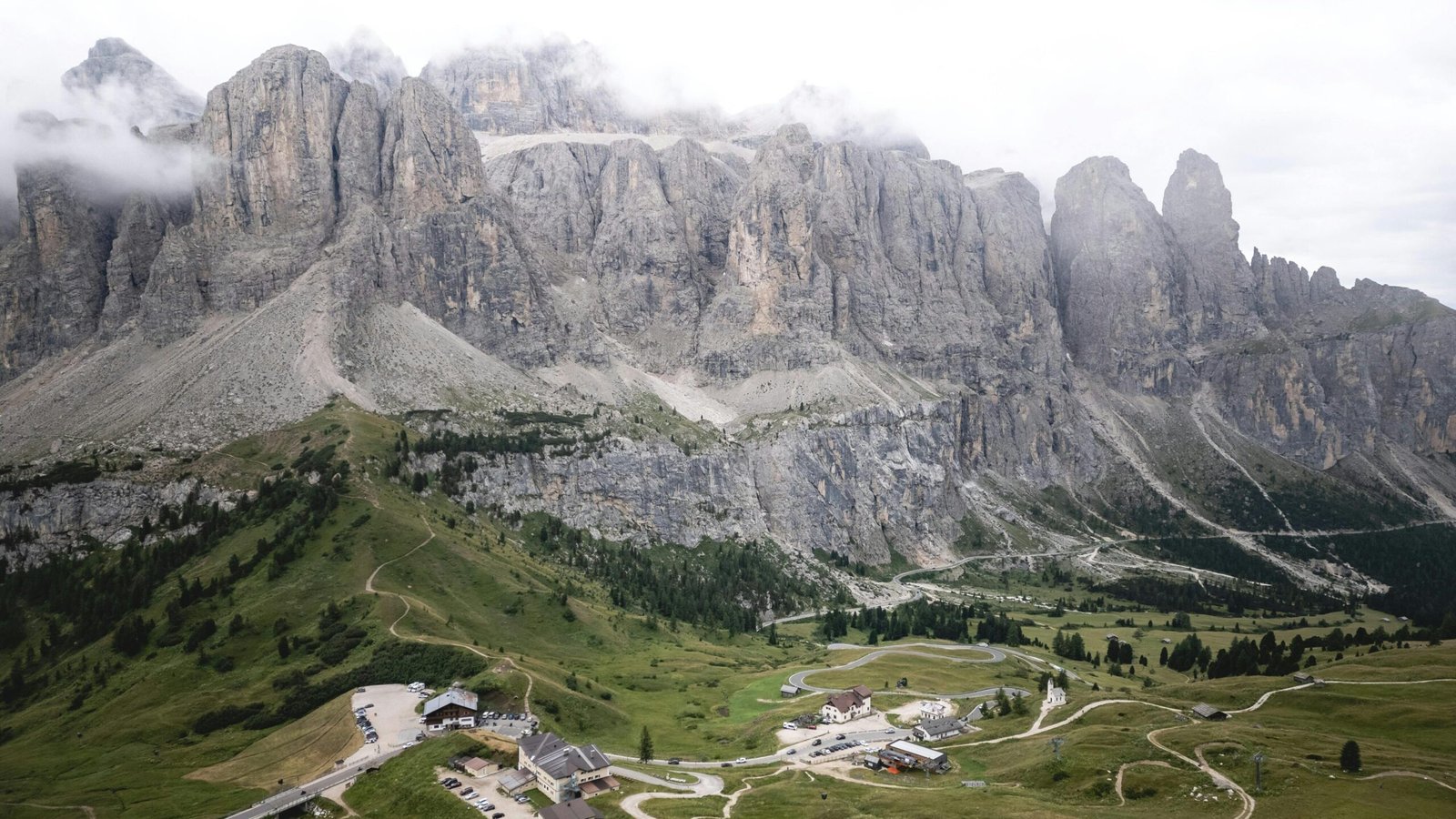
Alpine Drama at Its Finest
Trail Stats: 120 km (75 miles) | 8-12 days | Difficulty: Moderate to Challenging
The Dolomites Alta Via 1 showcases the dramatic limestone spires and alpine meadows that make this UNESCO World Heritage region one of Europe’s most photographed mountain ranges. This classic route offers the perfect introduction to Dolomites hiking.
Unlike typical Alpine granite, the Dolomites’ unique geology creates towering vertical walls and fantastical rock formations that glow pink and orange during sunrise and sunset—the famous “alpenglow” that makes these mountains legendary among photographers.
Cultural Richness: The trail passes through areas where German, Italian, and Ladin cultures blend, reflected in the cuisine, architecture, and local traditions you’ll encounter.
Accommodation Advantage: Choose between mountain huts (rifugios) with excellent Italian cuisine or camping with some of Europe’s most spectacular backdrops.
5. West Highland Way (Scotland)
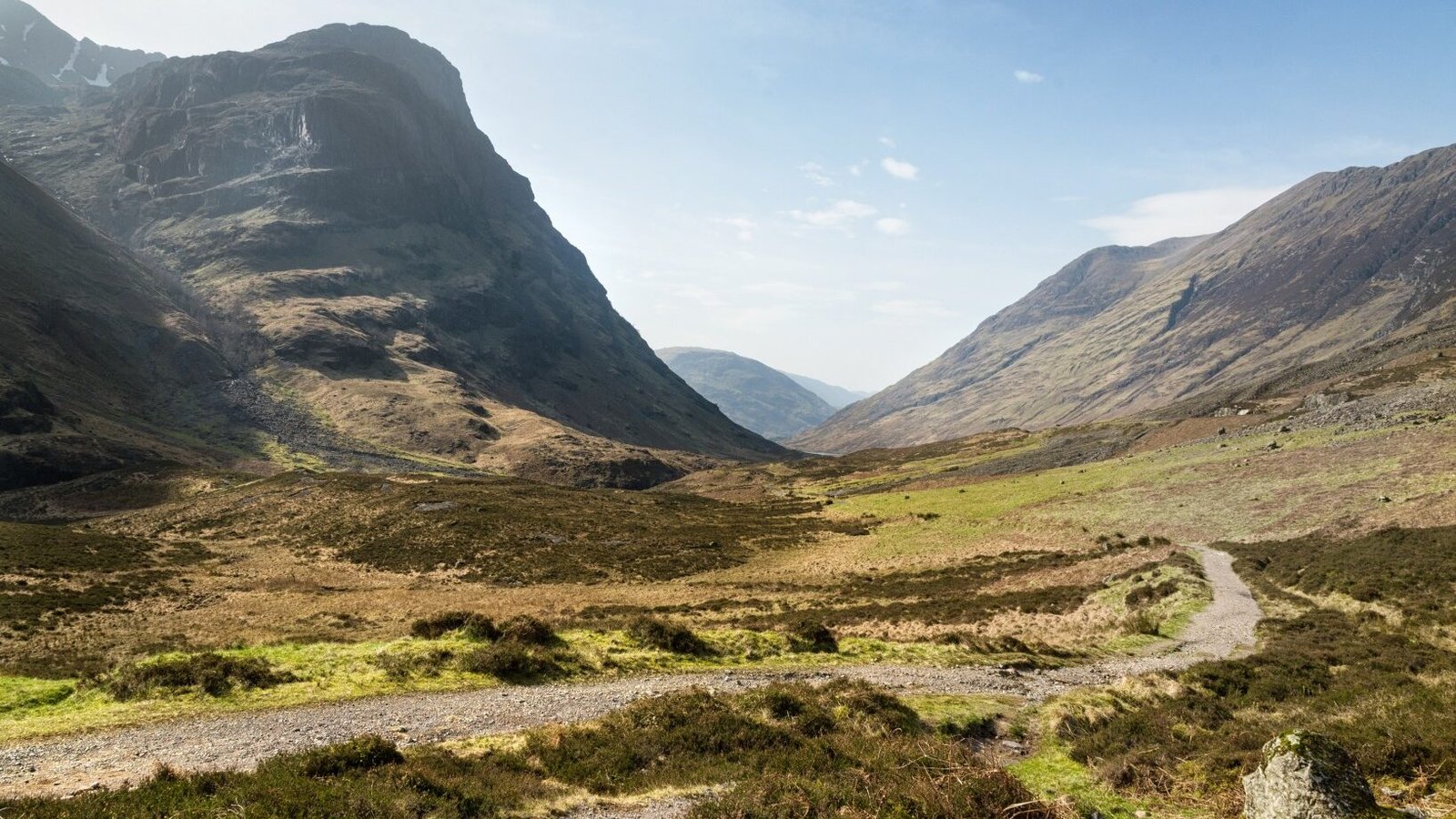
Through Scotland’s Legendary Landscapes
Trail Stats: 154 km (96 miles) | 6-8 days | Difficulty: Moderate
Scotland’s West Highland Way takes you through the landscapes that inspired countless Highland legends. This well-established trail offers an perfect introduction to Scottish hiking, combining accessibility with authentic Highland scenery.
Starting near Glasgow, the trail leads through the bonnie banks of Loch Lomond, across the wild expanse of Rannoch Moor, and into the dramatic glen of Glencoe before finishing in Fort William beneath Ben Nevis. The variety of landscapes—from lowland forests to highland moors—showcases Scotland’s geographical diversity.
Highland Culture: Experience traditional Scottish hospitality in cozy pubs and B&Bs, sample local whisky, and learn about the region’s turbulent clan history.
Weather Wisdom: Scottish weather is famously unpredictable. Pack waterproof gear and warm layers regardless of season, and embrace the moody atmosphere that makes Scottish landscapes so compelling.
6. Cinque Terre Coastal Trail (Italy)
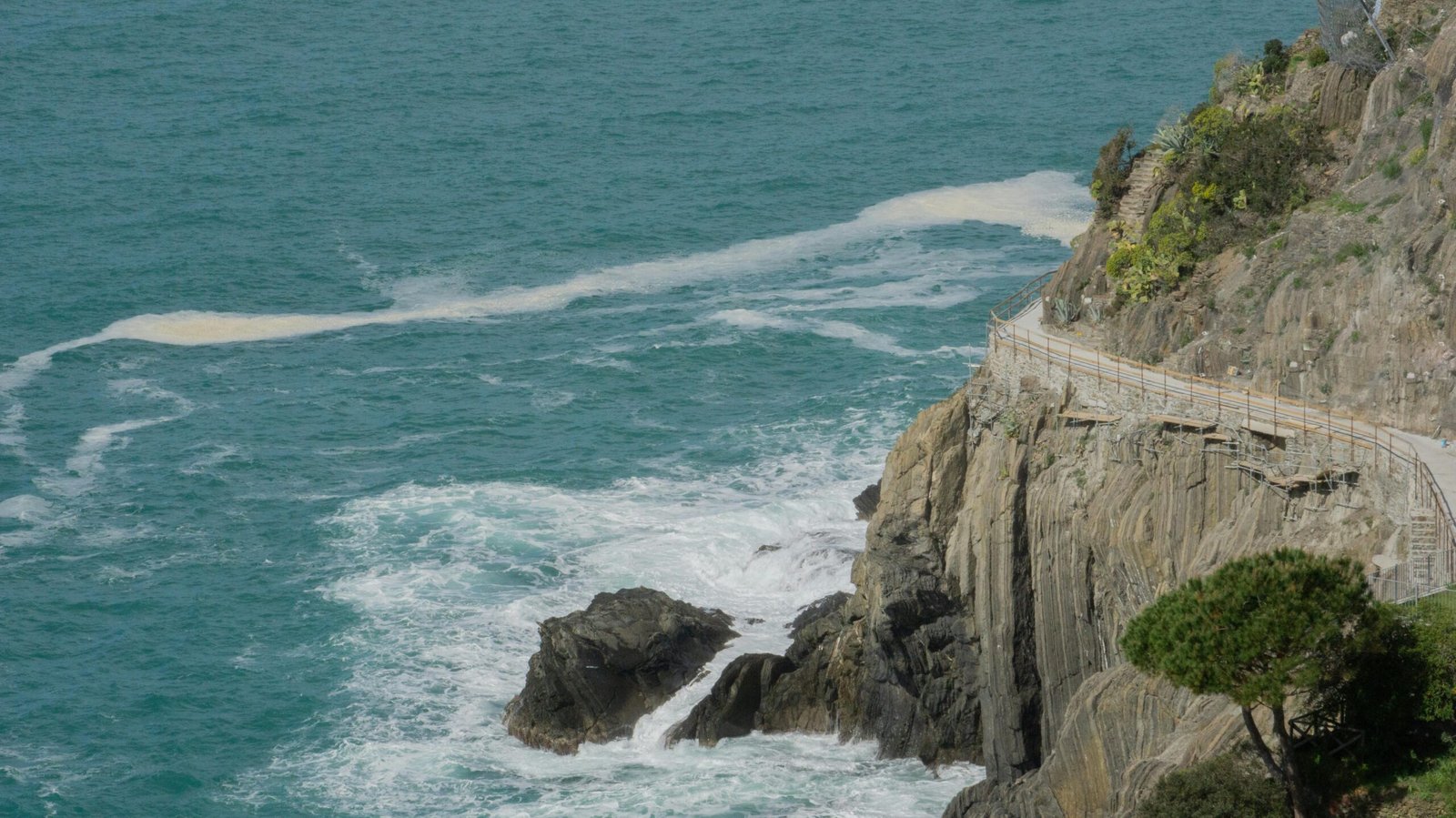
Mediterranean Charm on the Italian Riviera
Trail Stats: 12 km (7.5 miles) | 1-2 days | Difficulty: Easy to Moderate
The Cinque Terre trail connects five impossibly picturesque fishing villages along Italy’s rugged Ligurian coast. This coastal hike combines spectacular Mediterranean scenery with authentic Italian culture and cuisine.
Ancient stone pathways carved into cliffsides connect Monterosso, Vernazza, Corniglia, Manarola, and Riomaggiore. Between villages, you’ll hike through terraced vineyards that have clung to these steep slopes for centuries, offering stunning views of the turquoise Mediterranean.
Cultural Immersion: Each village has its own character and specialties. Stop for fresh pesto in Monterosso, seafood in Vernazza, and wine tastings throughout the region.
Timing Strategy: Visit during shoulder seasons (April-May or September-October) to avoid summer crowds and enjoy pleasant hiking weather.
7. Rota Vicentina Fisherman’s Trail (Portugal)
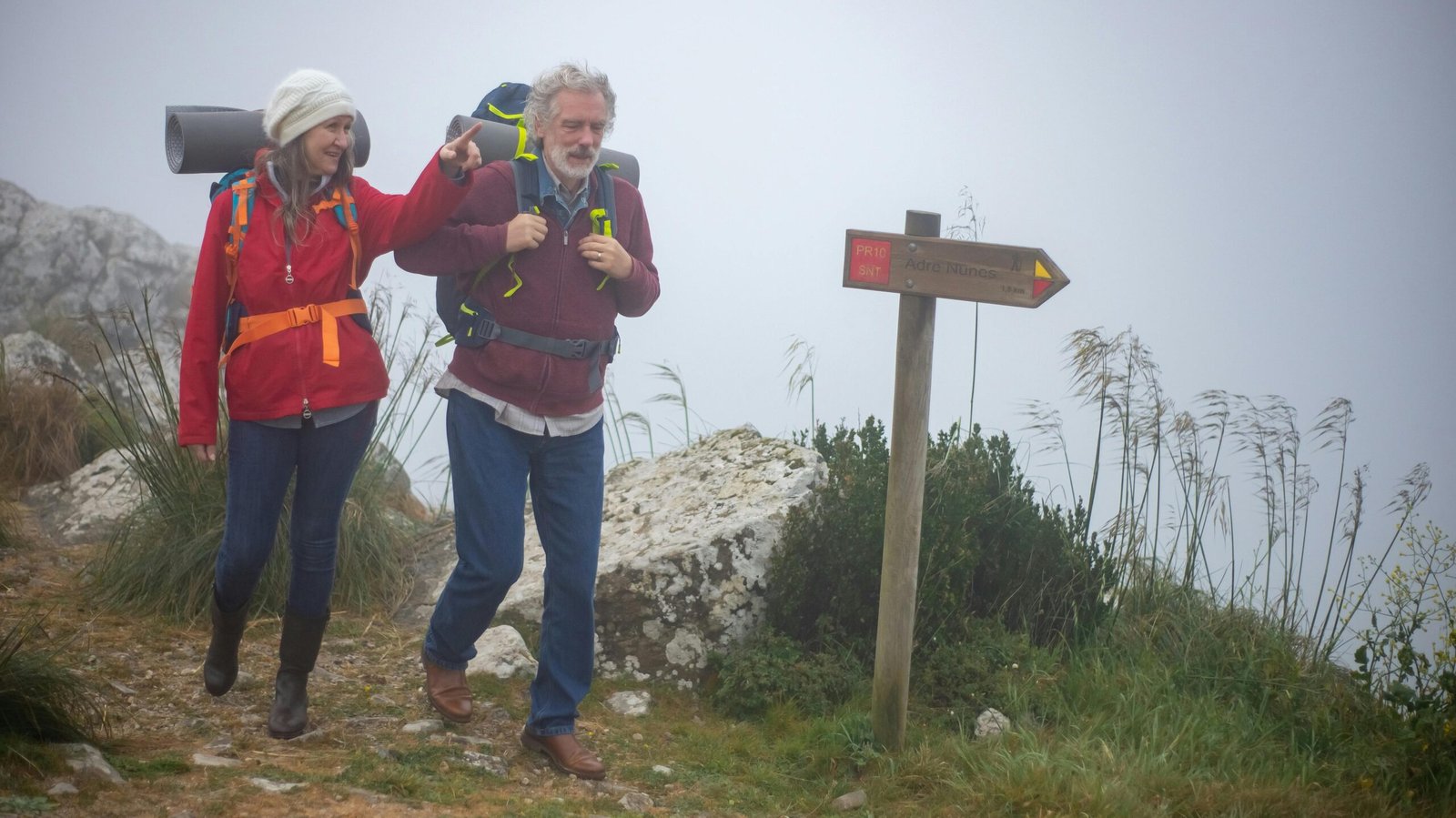
Europe’s Wild Atlantic Edge
Trail Stats: 76 km (47 miles) in sections | 4-5 days | Difficulty: Moderate
Portugal’s Fisherman’s Trail follows the country’s dramatic Atlantic coastline, offering some of Europe’s most spectacular coastal hiking. This rugged path traces ancient routes used by local fishermen, maintaining an authentic, wild character.
The trail alternates between clifftop paths with sweeping ocean views and secluded beaches where you might find yourself completely alone with the Atlantic’s roar. The landscape changes from dramatic sea stacks and hidden coves to vast stretches of wild beach backed by coastal dunes.
Unique Appeal: One of Europe’s last truly wild coastlines, with excellent seafood, traditional fishing villages, and consistently good weather.
Local Flavor: End each day in charming coastal towns with incredible fresh seafood and Portugal’s renowned hospitality.
8. High Tatras Peaks (Slovakia & Poland)
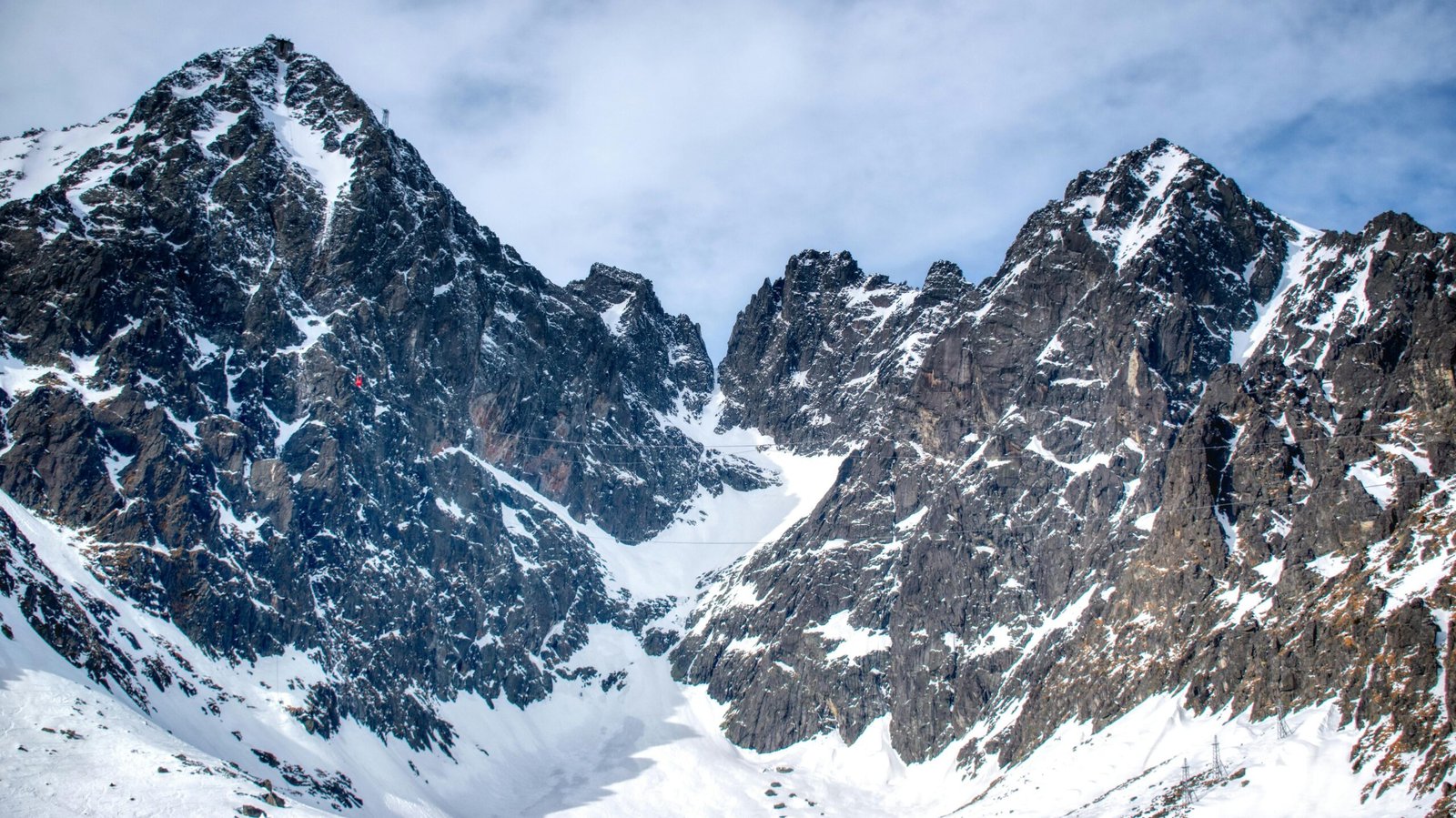
Alpine Adventure at Bargain Prices
Trail Stats: Various routes | 1-5 days depending on route | Difficulty: Moderate to Very Challenging
The High Tatras offer serious mountain hiking without the Alpine price tag or crowds. This compact mountain range packs dramatic peaks, glacial lakes, and challenging terrain into a relatively small area straddling the Slovakia-Poland border.
Despite covering only 340 square kilometers, the High Tatras contain over 25 peaks above 2,500 meters and more than 100 mountain lakes. The hiking here rivals the Alps for drama while offering a more authentic, less commercialized experience.
Standout Routes: The ascent to Rysy (Poland’s highest peak) offers incredible panoramic views, while the Five Spis Lakes circuit provides classic alpine lake hiking.
Mountain Culture: Traditional mountain huts serve hearty Slovak and Polish mountain cuisine at incredibly reasonable prices.
9. Caminito del Rey (Spain)
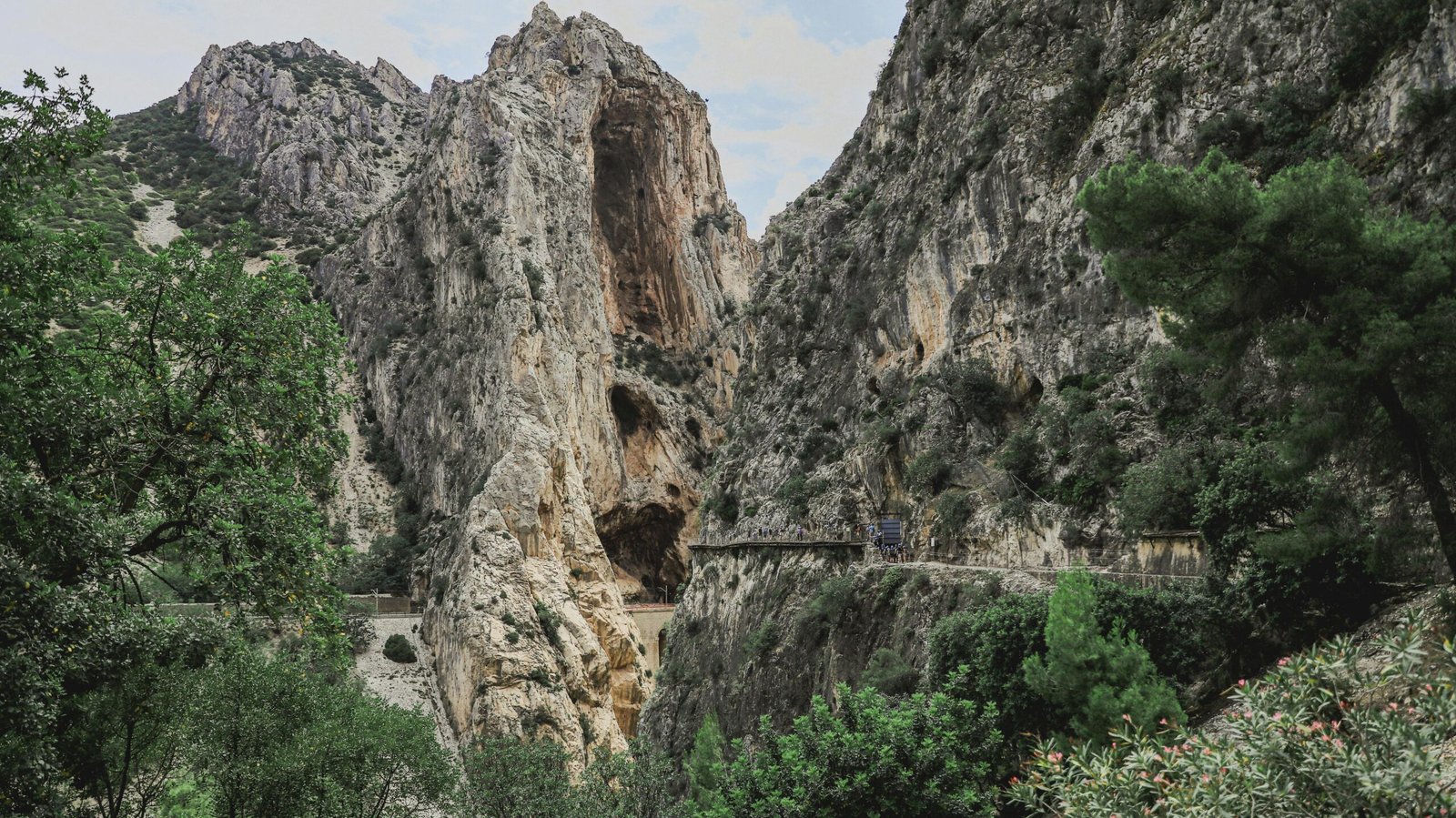
The World’s Most Dramatic Walkway
Trail Stats: 7.7 km (4.8 miles) | 3-4 hours | Difficulty: Easy (with serious exposure)
Once infamously known as the world’s most dangerous hike, the Caminito del Rey has been completely renovated into a safe but still thrilling experience. This dramatic walkway clings to the walls of El Chorro gorge in Andalusia, offering heart-stopping views and an adrenaline rush unlike any other European hike.
The path consists of narrow walkways bolted to vertical canyon walls 100 meters above the Guadalhorce River. Glass panels at viewing points let you look straight down into the gorge, creating an unforgettable (if nerve-wracking) experience.
Booking Essential: Advance reservations required due to limited daily capacity. Book several weeks ahead, especially for weekends and peak season.
Access Note: The approach walks add significant distance to the main trail, making this a longer day than the core statistics suggest.
10. Eagle Walk (Austria)
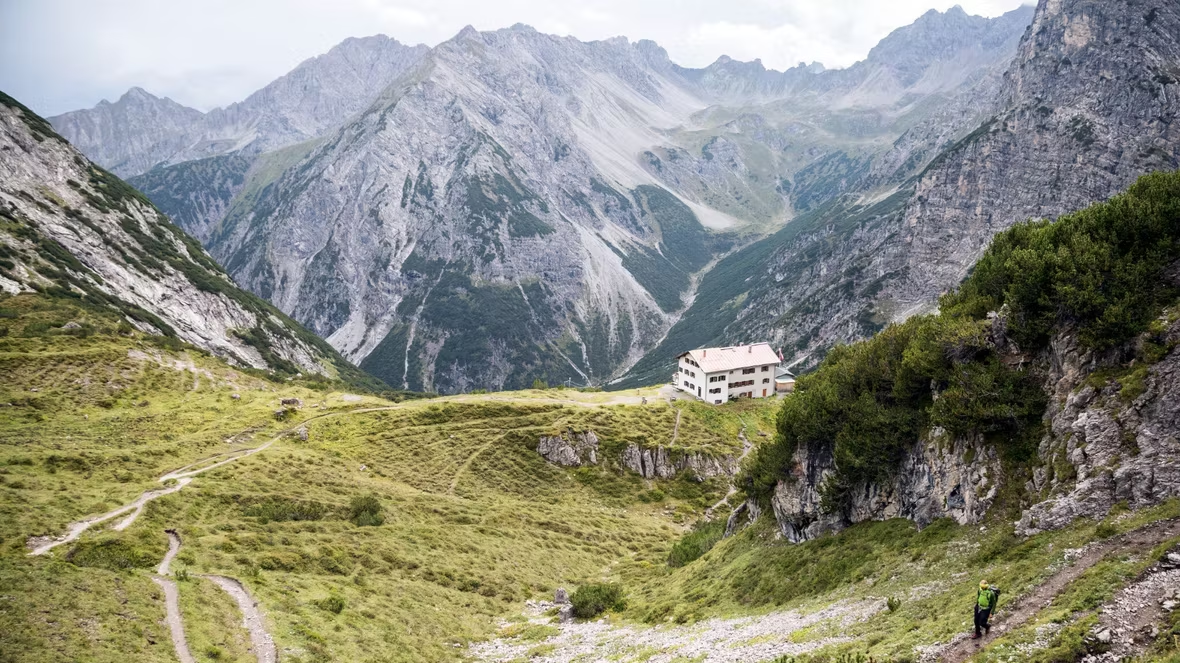
Tyrol’s Magnificent Alpine Circuit
Trail Stats: 320 km (200 miles) in sections | Flexible duration | Difficulty: Moderate to Very Challenging
Austria’s Eagle Walk (Adlerweg) traces a route across Tyrol that resembles an eagle in flight when viewed on a map. This extensive trail network offers incredible flexibility, allowing you to choose sections that match your time and skill level.
The trail showcases Tyrol’s diverse mountain landscapes, from the limestone peaks of the Karwendel Mountains to the glaciated summits of the Stubai Alps. Traditional Austrian mountain huts provide excellent food and accommodation throughout the route.
Flexible Planning: Choose individual stages from 1-day hikes to multi-week expeditions. The Karwendel section offers some of Europe’s most dramatic limestone mountain scenery.
Alpine Efficiency: Austrian mountain huts set the standard for comfort and cuisine, making this trail perfect for hikers who appreciate excellent infrastructure.
11. Kerry Way (Ireland)
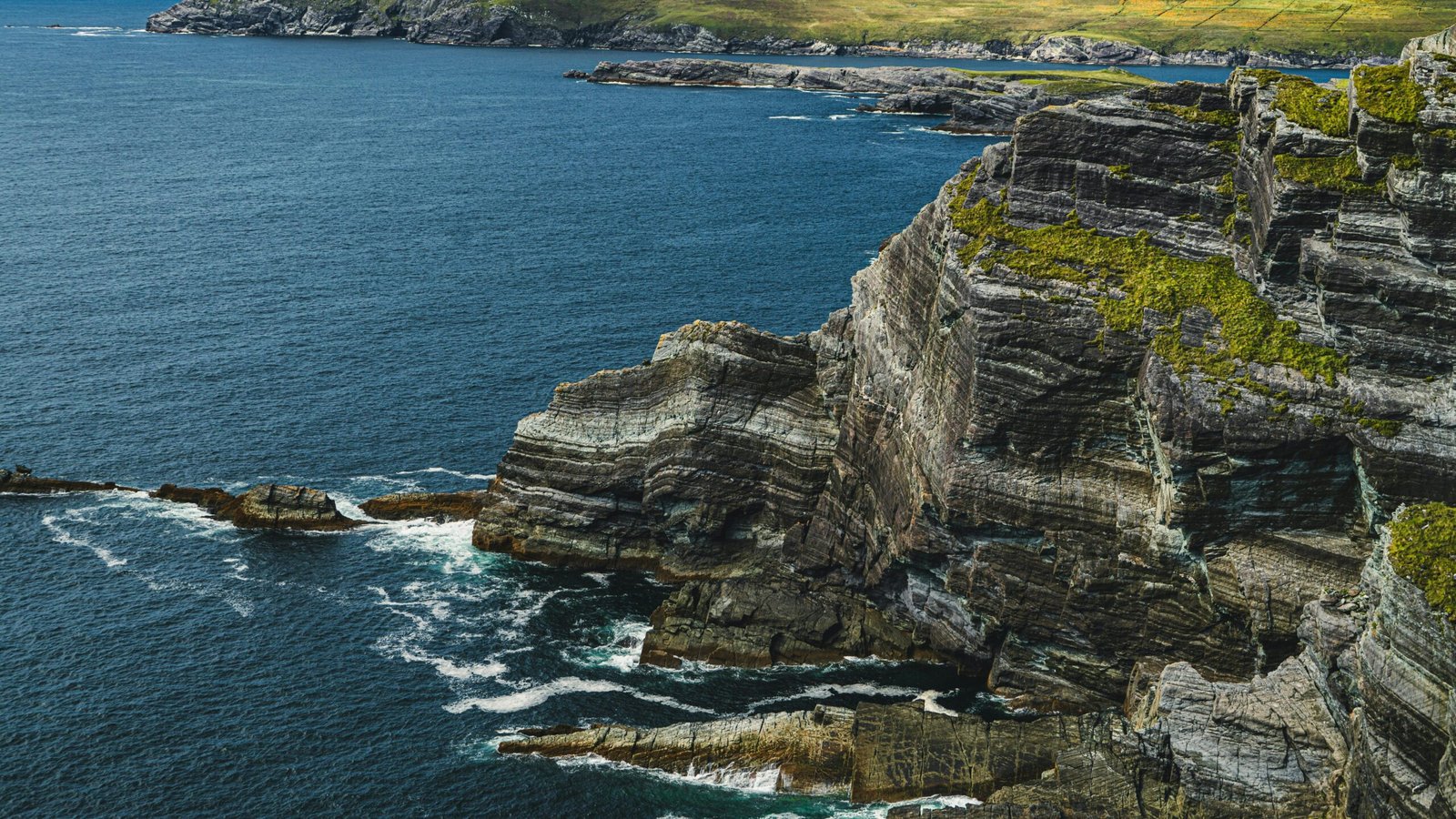
Ireland’s Most Scenic Ring
Trail Stats: 214 km (133 miles) | 9-10 days | Difficulty: Moderate
The Kerry Way circles the Iveragh Peninsula in southwest Ireland, showcasing the dramatic landscapes that make County Kerry famous worldwide. This circular route offers an perfect introduction to Irish hiking culture and scenery.
The trail combines rugged coastal sections with inland mountain passes, ancient stone circles, and traditional Irish villages. You’ll hike past pristine lakes, over mountain passes with sweeping Atlantic views, and through landscapes steeped in Irish mythology and history.
Cultural Immersion: Traditional Irish music, hospitality, and pub culture are integral parts of the Kerry Way experience. Many hikers consider the evening entertainment as memorable as the day’s hiking.
Weather Reality: Irish weather can be changeable, but the lush green landscapes that result are part of the country’s legendary beauty.
12. Via Alpina Green Trail (Slovenia)
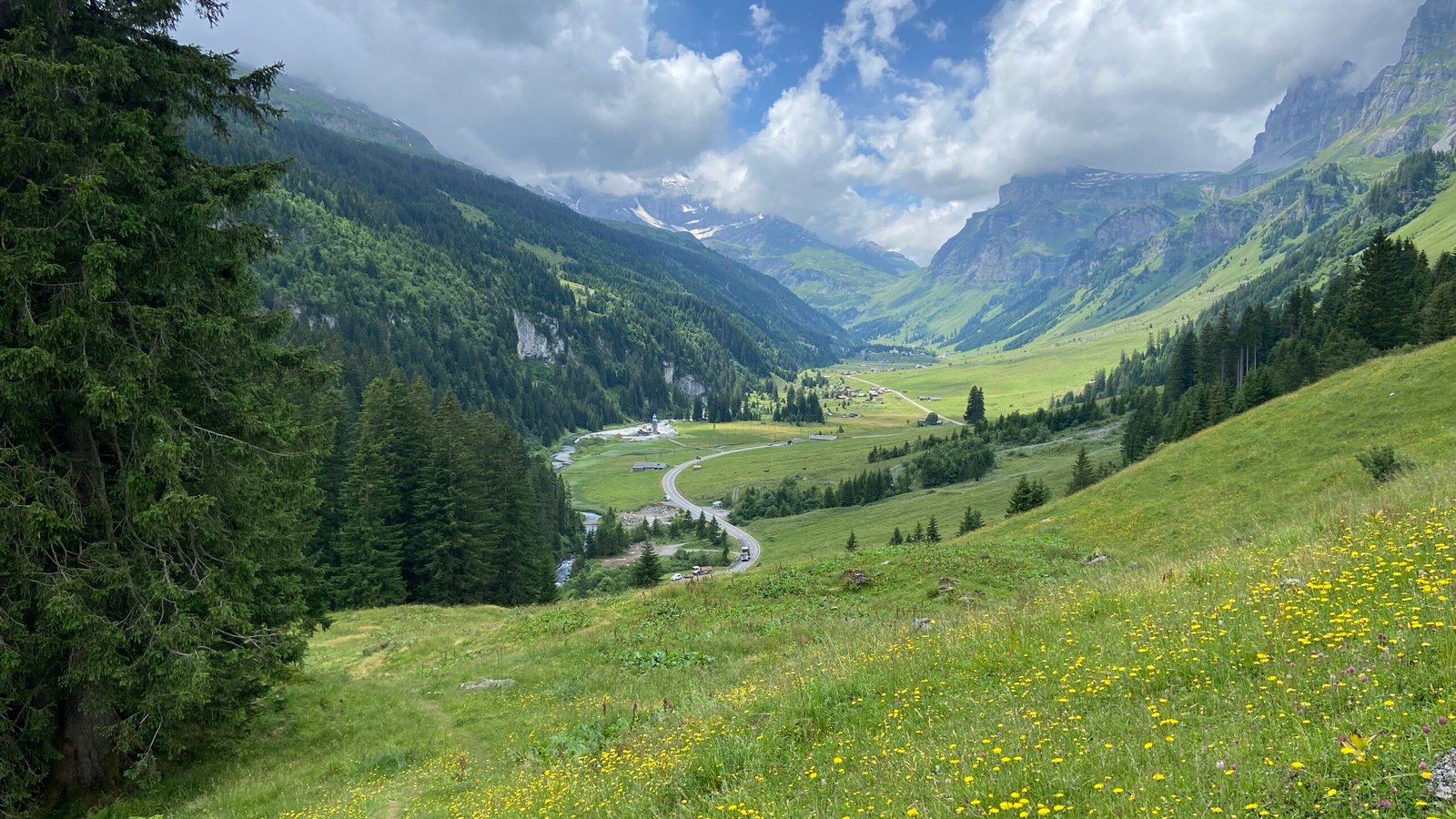
Europe’s Hidden Alpine Gem
Trail Stats: 340 km (211 miles) | 15-20 days | Difficulty: Moderate to Challenging
Slovenia’s section of the Via Alpina showcases one of Europe’s most underrated mountain regions. This trail through the Julian Alps offers pristine wilderness, excellent mountain huts, and significantly fewer crowds than more famous Alpine routes.
The route includes Lake Bled, Triglav National Park, and some of Europe’s most spectacular karst landscapes. Traditional Slovenian mountain hospitality and cuisine add cultural richness to the hiking experience.
Hidden Gem Status: Offers Alpine-quality hiking at lower costs and with fewer crowds than Western European alternatives.
Unique Features: Extensive cave systems, emerald rivers, and traditional Alpine architecture create a distinctive hiking experience.
13. GR11 Pyrenees Traverse (Spain)
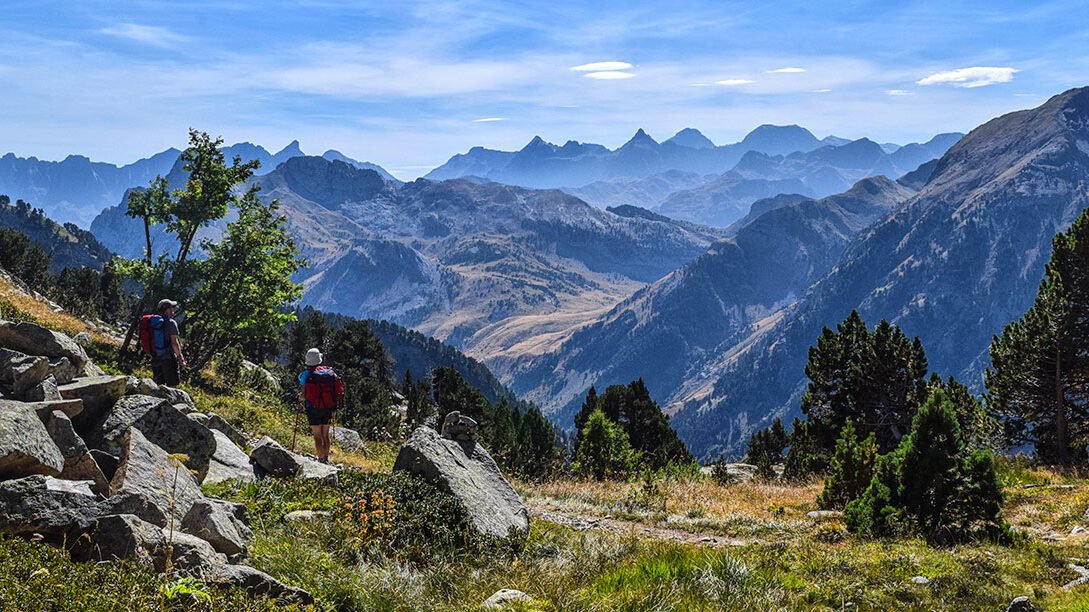
From Atlantic to Mediterranean
Trail Stats: 820 km (510 miles) | 45-50 days complete | Difficulty: Challenging
The GR11 traverses the entire Spanish side of the Pyrenees from the Atlantic to the Mediterranean, offering one of Europe’s great long-distance hiking challenges. This lesser-known trail provides wilderness experiences rare in Western Europe.
The route showcases the Pyrenees’ incredible diversity: Basque green hills, high Alpine peaks, deep canyons, and Mediterranean scrublands. Wildlife encounters include brown bears, Pyrenean chamois, and spectacular bird life.
Sectional Hiking: Most hikers tackle individual sections rather than the complete traverse, with many excellent 3-10 day segments available.
Wild Character: More remote and less developed than Alpine routes, offering authentic wilderness experiences.
14. Sentiero Azzurro (Blue Trail), Italian Riviera
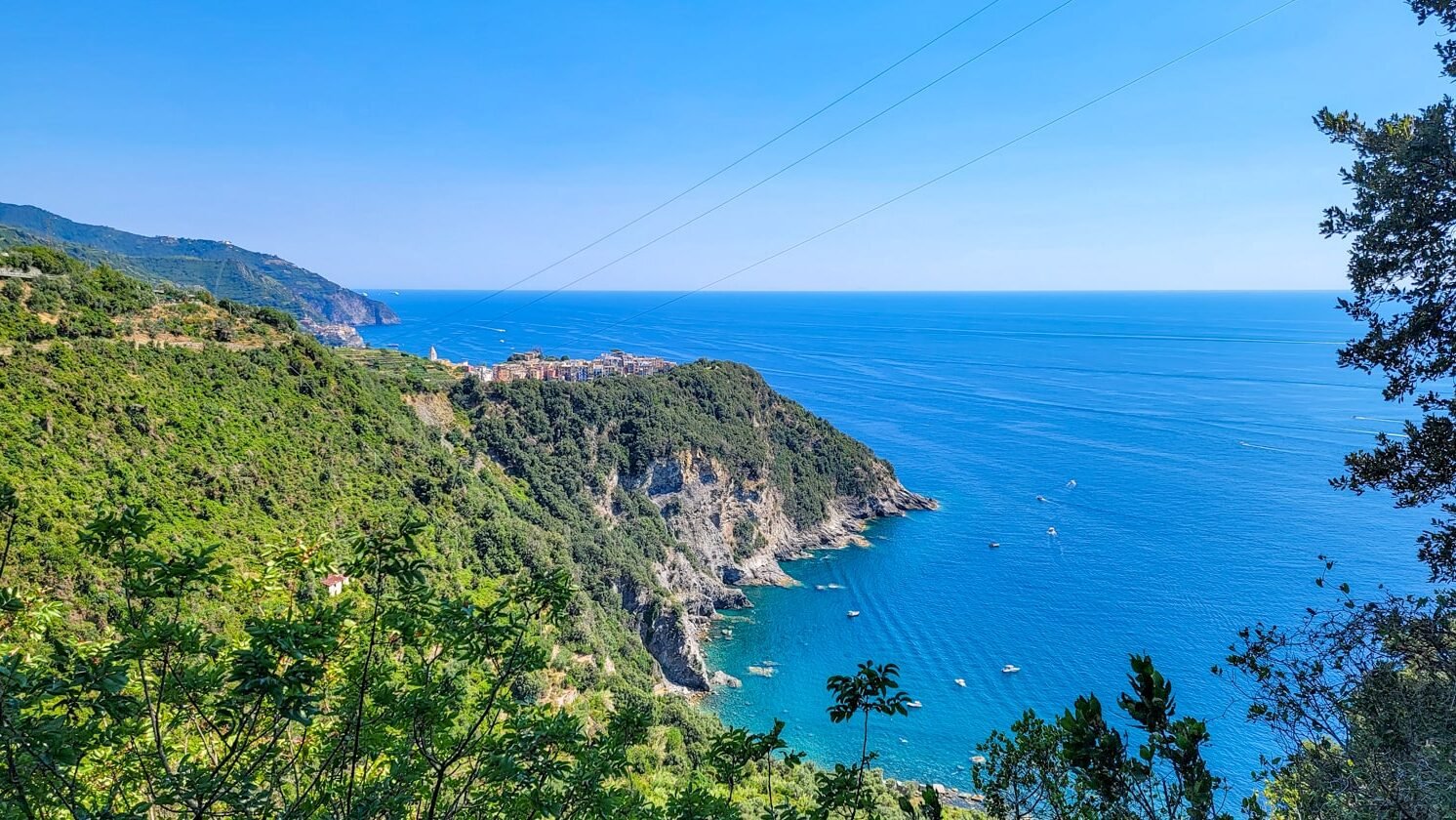
Portofino’s Coastal Paradise
Trail Stats: 15 km (9 miles) various segments | 1-2 days | Difficulty: Easy to Moderate
The Sentiero Azzurro connects the glamorous resort town of Portofino with traditional fishing villages along one of Italy’s most beautiful coastlines. This network of coastal paths offers spectacular Mediterranean hiking with world-class dining and accommodation.
Unlike the crowded Cinque Terre, these trails maintain a more exclusive, peaceful character while offering equally stunning coastal scenery. The combination of luxury resort towns and traditional fishing villages creates unique cultural contrasts.
Luxury Hiking: Combine serious coastal hiking with upscale accommodation and dining in one of Europe’s most prestigious coastal regions.
Photography Paradise: Some of the most photogenic coastal scenery in Europe, especially around Portofino’s famous harbor.
15. Lofoten Islands Hiking (Norway)
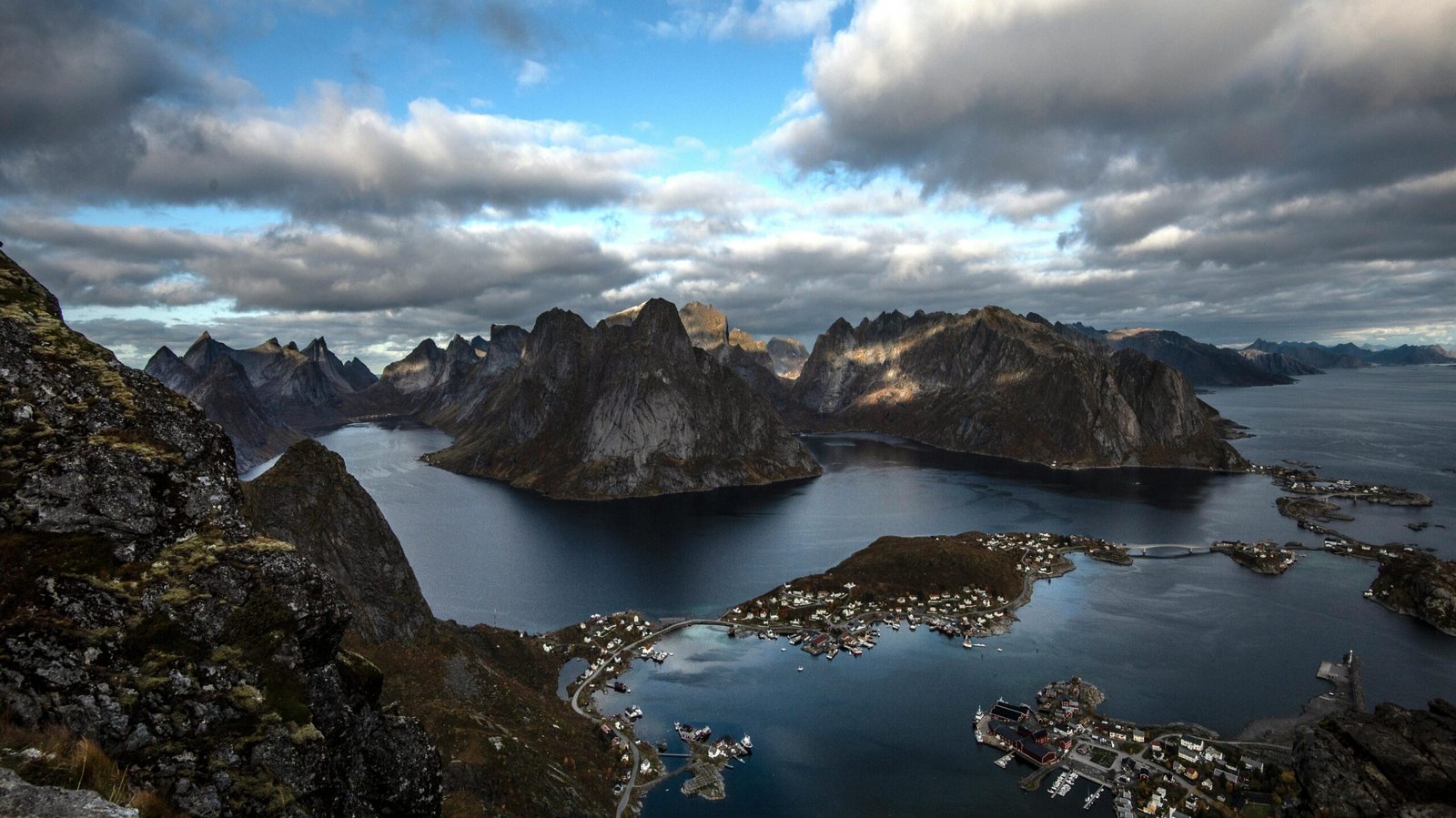
Arctic Paradise Above the Circle
Trail Stats: Various day hikes | 1-7 days | Difficulty: Easy to Very Challenging
The Lofoten Islands offer some of Europe’s most dramatic hiking above the Arctic Circle. These islands combine towering peaks rising directly from the sea, traditional fishing villages, and the unique experience of midnight sun during summer months.
Popular hikes include Reinebringen for classic Lofoten views, Kvalvika Beach for remote coastal camping, and Munken for serious mountain challenges. The combination of peaks, sea, and Arctic light creates unforgettable hiking experiences.
Unique Features: Midnight sun in summer, Northern Lights in winter, and fishing village culture unchanged for centuries.
Adventure Level: Remote location and Arctic conditions require serious preparation, but rewards are proportionally spectacular.
Essential Planning Guide for European Hiking
Permits and Reservations
Unlike many wilderness areas worldwide, most European trails don’t require permits. However, popular mountain huts book up months in advance, especially in the Alps and Dolomites. The Caminito del Rey requires advance booking, and some national parks have seasonal restrictions.
Transportation Excellence
Europe’s excellent public transportation makes trailhead access easy and eco-friendly. Many trails are designed around train stations and bus connections, reducing the need for rental cars.
Accommodation Options
- Mountain Huts: Offer meals, beds, and social atmosphere. Book well in advance for popular routes.
- Hotels and B&Bs: Available in most trail towns, offering comfort and local culture.
- Camping: Permitted in designated areas, though wild camping rules vary by country.
Seasonal Considerations
- Spring (April-May): Lower crowds, wildflowers, variable weather
- Summer (June-August): Peak season with best weather but highest crowds
- Fall (September-October): Excellent hiking weather, fewer crowds, beautiful colors
- Winter: Limited high-altitude access but excellent for lower-elevation coastal hikes
Budget Planning
- Western Europe: Higher costs but excellent infrastructure (Switzerland, France, Italy)
- Eastern Europe: Outstanding value with comparable hiking quality (Slovakia, Slovenia, Poland)
- Scandinavia: High costs but unique experiences and excellent facilities
If you are worried about your budget, check this article: Budget Hiking: How to Gear Up Without Breaking the Bank
Creating Your European Hiking Adventure
These European hiking destinations offer incredible diversity in landscapes, difficulty levels, and cultural experiences. Whether you’re planning a lifetime achievement like the Tour du Mont Blanc or seeking accessible day hikes along the Mediterranean coast, Europe’s trails deliver unforgettable adventures.
The key to successful European hiking lies in matching your chosen trails to your experience level, available time, and personal interests. Start with more accessible routes to build confidence and experience before tackling the continent’s most challenging trails.
Most importantly, embrace the cultural richness that makes European hiking unique. The combination of spectacular natural beauty, rich history, excellent infrastructure, and diverse cultures creates hiking experiences unmatched anywhere in the world.
Your European hiking adventure awaits. Choose your trails, book your accommodation, and prepare for hiking experiences that will inspire you for years to come. From the Arctic wilderness of the Lofoten Islands to the Mediterranean charm of the Italian Riviera, Europe’s trails offer adventures limited only by your imagination.
Ready to start planning? Begin researching seasonal conditions and accommodation options for your chosen trails. The mountains, coasts, and cultures of Europe are calling—it’s time to answer with your hiking boots laced up and adventure in your heart.
Related articles:
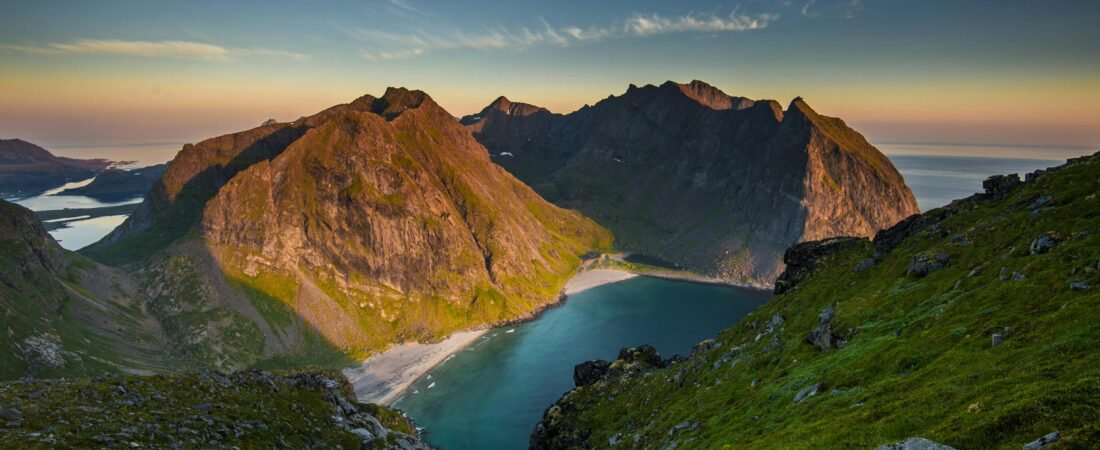
Leave a Reply